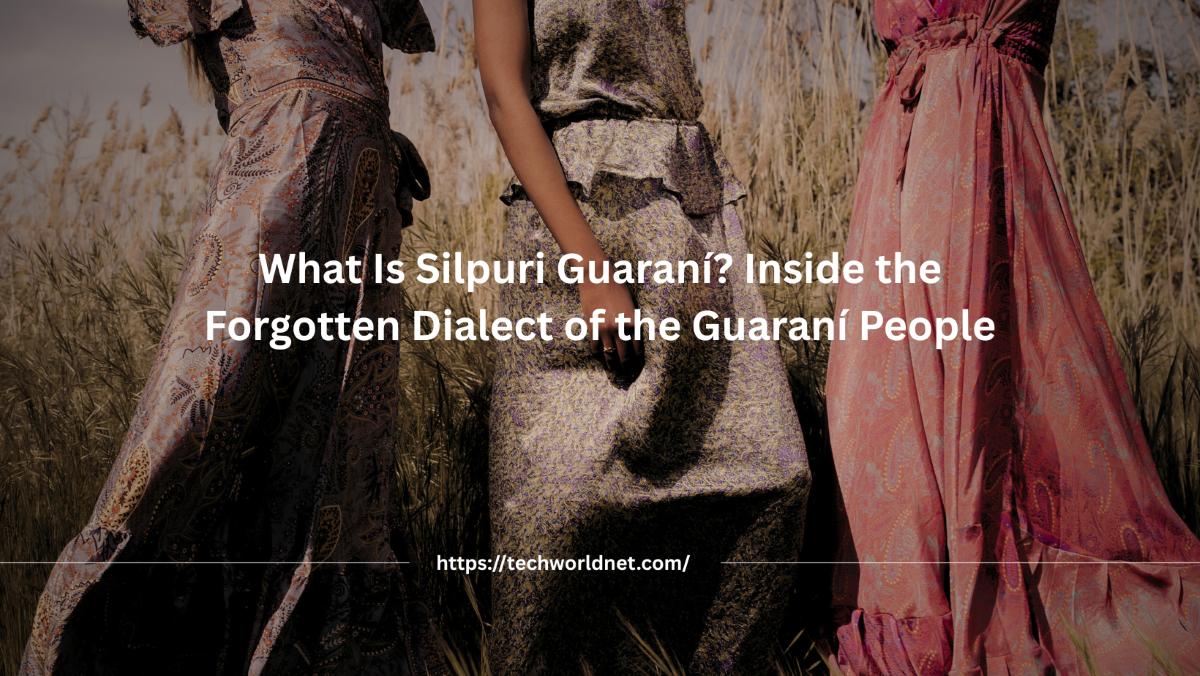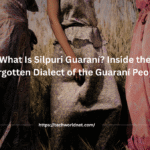Now Reading: What Is Silpuri Guaraní? Inside the Forgotten Dialect of the Guaraní People
-
01
What Is Silpuri Guaraní? Inside the Forgotten Dialect of the Guaraní People
What Is Silpuri Guaraní? Inside the Forgotten Dialect of the Guaraní People

Introduction
In the rich mosaic of South America’s indigenous languages and cultures, the dialect known as Silpuri Guaraní emerges as a compelling subject of both linguistic and cultural significance. Though seldom referenced in mainstream scholarship, Silpuri Guaraní is described as a regional variant of the broader Guaraní language family, one that encapsulates unique traditions, world-views, and linguistic features.
In this blog, we will explore its origins, distinctive features, living context, challenges, and what its future might hold.
Origins and Historical Context
Silpuri Guaraní is said to have evolved in more isolated or rural communities of the Guaraní-speaking peoples, particularly in parts of eastern Paraguay and northern Argentina.
The term “silpuri guarani” itself is debated among scholars: some suggest it comes from a Guaraní root meaning “soft voice” or “gentle speech,” while others think it refers to a specific clan or forest-dwelling sub-group that preserved older linguistic forms.
Because of geographic isolation, strong oral traditions, and resistance to colonial/official linguistic assimilation, Silpuri Guaraní has retained archaic or variant features not found in more standardized Guaraní.
Linguistic Features
While detailed academic work on Silpuri Guaraní is still limited, several distinguishing features are noted:
- Syntax & sentence structure: The dialect reportedly uses a verb-final sentence order more consistently than other Guaraní variants.
- Phonetics: It is characterized by richer use of glottal stops, nasal transitions, vowel elongation, and tonal/inflectional variation. These give the dialect a more “musical” quality.
- Lexicon: It holds a deep reservoir of vocabulary tied to flora, fauna, ritual practices, and ecological/spiritual concepts — many of which lack direct equivalents in Spanish or Portuguese. For example: karãyi’ávo (a healing ritual involving sacred smoke), ypytaña (“first rains” marking harvest), and nhanderuete (a concept of the divine) are cited
- Non-verbal or performative elements: Storytelling in Silpuri Guaraní is reported to include whistles, gestures, pauses, and symbolic action, making it as much performance as communication.
Cultural Significance
Silpuri Guaraní is more than a dialect: it is a living vessel of worldview, tradition, ecology and identity. Here’s how:
- Knowledge transmission: Through the dialect are carried myths of origin, songs, harvest-ceremonies, ethical parables, and medicinal knowledge all deeply tied to the land, rivers, forests and stars.
- Spiritual/ontological dimension: In many Guaraní traditions, language is not just descriptive but performative: words hold energy, they link humans and nature. Silpuri’s preservation of older ritual vocabulary suggests that the link remains strong.
- Identity and resilience: In contexts of colonization, linguistic assimilation, and cultural pressure, the use of Silpuri Guaraní can act as a marker of resistance, heritage, and belonging.
Current Status & Revitalization Efforts
While formal data on the number of speakers and vitality of Silpuri Guaraní is scant, there are signs of both challenge and hope:
Challenges:
- Lack of a standardized writing system makes formal teaching and archiving difficult. Booleandreams
- Younger generations may shift to Spanish, Portuguese, or more dominant Guaraní variants, leading to loss of intergenerational transmission.
- Governmental and educational systems often don’t distinguish between dialects; support tends to go to the “standard” language forms rather than localized variants.
Revitalization efforts:
- Some community-led initiatives: language workshops, storytelling sessions, crafts, integrating the dialect in music and youth projects.
- Digital recording of elders, collections of vocabulary, and oral histories are beginning to be undertaken by NGOs and linguists.
- Some educational pilot programmes recognizing the dialect variant alongside Spanish or standard Guaraní in bilingual settings.
Why Silpuri Guaraní Matters
- Linguistic diversity: It enriches our understanding of the Guaraní family and of how languages evolve in different ecological and social settings.
- Cultural heritage: It embodies traditional ecological knowledge, world-views and ritual practices that risk disappearing.
- Global insight: In a world with accelerating language loss, Silpuri Guaraní offers a reminder of what is at stake when a dialect dies: not just words, but worldview.
- Ethical dimension: Supporting dialects like Silpuri is part of respecting indigenous rights, self-determination, and cultural dignity.
Looking Ahead: What the Future Might Hold
The future of Silpuri Guaraní is at a crossroads. Possible pathways include:
- Revival & adaptation: Through community empowerment, educational support, digital tools (apps, recordings), and allowing the dialect to evolve with youth, music, and modern media, Silpuri can regain vitality.
- Integration into formal systems: Recognition by governments, inclusion in school curricula, and official use could bolster its status.
- Documentation & archiving: Even if speaker numbers decline, robust documentation preserves the dialect for future generations and scholarly work.
- Hybrid future: The dialect may evolve into a “heritage variant” — used in cultural contexts, arts, festivals, while other languages dominate in everyday life.
- Loss scenario: Without sustained effort, generational shifts could lead to language death, which would mean the loss of its unique ecological, spiritual,and linguistic heritage.
Conclusion
Silpuri Guaraní is an evocative example of how language, culture, ecology, and identity intertwine. It stands as a testament to the resilience of indigenous traditions and the importance of sustaining them. As we move further into the 21st century with global pressures of urbanization, assimilation, and language homogenization, the story of Silpuri Guaraní is a call to awareness: to pay attention not only to major languages, but to the subtle dialects, the whispered voices in remote forests, the elders’ songs, and the children’s laughter in their mother tongue.
By supporting and listening to communities that speak Silpuri, we help preserve not only words, but ways of seeing the world — deeply rooted, richly textured, and undeniably human.
(FAQ)
1. What is Silpuri Guaraní?
Silpuri Guaraní is described as a regional dialect or cultural variant of the broader Guaraní language, spoken among some Indigenous communities in eastern Paraguay and northern Argentina. It reflects unique linguistic, cultural, and spiritual traditions that differ slightly from Standard Paraguayan Guaraní.
2. Is Silpuri Guaraní officially recognized?
While Guaraní itself is an official language of Paraguay, Silpuri Guaraní is not separately recognized by national governments or major linguistic institutions. Most official recognition and teaching materials focus on “Standard” or “Paraguayan” Guaraní.
3. Where is Silpuri Guaraní spoken?
Silpuri Guaraní is reportedly spoken in small, often rural or forested communities of eastern Paraguay, near the borders of Misiones and Corrientes (Argentina) and parts of southern Brazil. The dialect’s distribution is more cultural than geographic — tied to clans, oral traditions, and community networks rather than defined political boundaries.















